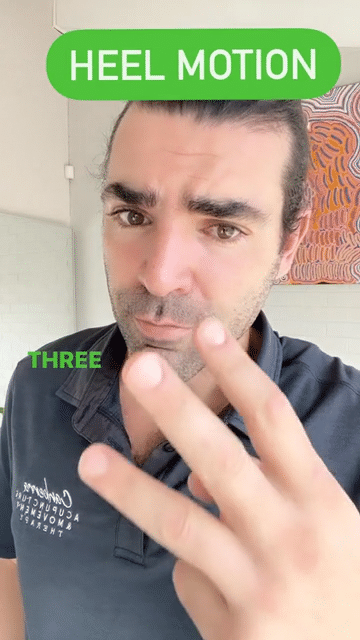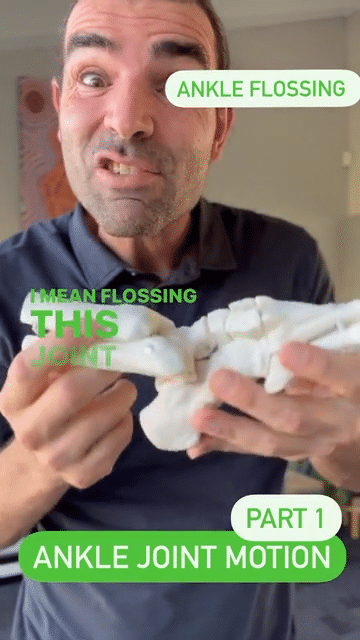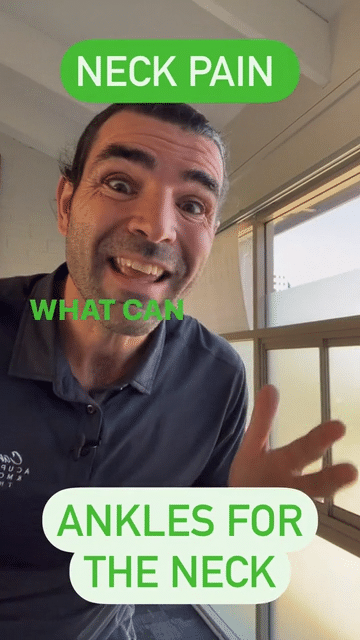3D Heel Motion Explained – Improve Foot Function & Reduce Heel Pain
Discover how your heel moves in three planes of motion and why it matters for posture, pain, and whole-body movement. Learn from Canberra’s biomechanics specialist at The Body Lab.
Introduction: Why Your Heel Is More Than Just a Ground Contact Point
Think your heel just hits the ground and calls it a day? Think again. The heel is the unsung hero of gait—absorbing impact, controlling motion, and coordinating with your pelvis and skull like the backstage crew of your movement system.
In this blog, we’ll explore how the heel moves in three planes of motion, why that matters for pronation, supination, and whole-body mobility, and what to do if it’s not moving well (spoiler: it involves more than stretching your calves).
How the Heel Moves: Three Planes, Endless Impact
The heel (calcaneus) moves in three-dimensional shapes during every step:
Sagittal Plane – Tilts forwards and backwards (plantarflexion and dorsiflexion)
Frontal Plane – Tilts inwards and outwards (eversion and inversion)
Transverse Plane – Rotates internally and externally
These movements combine to form two key shapes:
Pronation Shape = Load
Tilts forward (plantarflexes)
Rolls in (everts)
Rotates in (internally)
Supination Shape = Propel
Tilts back (dorsiflexes)
Rolls out (inverts)
Rotates out (externally)
🧠 Tip: Thinking in “shapes” rather than isolated joint actions helps both therapists and clients understand dysfunctional movement patterns more easily.
Heel Position: Neutral, Valgus, or Varus?
In a resting posture (standing still), your heel should be neutral—upright and aligned with the lower leg.
But it might also fall into one of these postures:
Valgus heel – Tilts inward toward the other foot
Varus heel – Tilts outward away from the other foot
Why does this matter? Because your arch does the opposite to help keep your foot flat on the ground. If your heel is in valgus, your arch often collapses; if it's in varus, your arch may become overly rigid.
🔍 Want to check yourself? Stand barefoot and look at your heels from behind in a mirror. Notice the angle? That’s your first clue.
The Heel’s Influence: It’s Not Just a Foot Thing
Here’s where things get juicy: your heel doesn’t act alone. It’s part of a larger kinetic chain involving your pelvis and skull.
➡️ As you walk, the heel, pelvis, and head move together—three-dimensionally, step by step.
➡️ Restrictions in heel mobility can create compensations in your pelvis, spine, neck, or even jaw.
💡 In fact, restoring heel motion has helped many of my clients at The Body Lab resolve stubborn pelvic or neck pain when nothing else worked.
What Affects Heel Motion? Forefoot & Ankle Mechanics
Two big influencers decide whether your heel is free to move or locked up like a rusty hinge:
1. The Forefoot (Arch)
To allow the heel to pronate and load properly, the forefoot must:
Drop to the ground
Spread laterally
Absorb force
If your arch is rigid or “stuck in high gear,” the heel won’t move efficiently.
2. The Talus & Ankle Joint
Although the ankle sits on the heel, it performs different functions. Don’t assume that moving your ankle = moving your heel.
➡️ Test: Place your foot flat, then try gently tilting your heel inward/outward without rolling your ankle. Tricky? That’s likely a sign you’ve got some mobility issues.
Heel Exercises to Try at Home
Here are a few simple drills to reintroduce 3D motion to your heel:
Wall Heel Rocks – Train inversion/eversion while keeping forefoot grounded
Heel Press Rotations – Load your heel and explore rotation as you shift weight
Staggered Toe Drops – Encourage forefoot splay while anchoring the heel
💡 Tip: Focus on slow, controlled movements and feel the shape change in your foot.
How I Can Help at The Body Lab in Canberra
I’m Riccardo Galeotti, a Movement Therapist, Biomechanics Educator, and founder of The Body Lab. My work focuses on how joint shapes (not just muscle activation) influence function, pain, and performance.
At The Body Lab, I assess:
Heel shape and movement
Full-body motion during gait
How your foot mechanics relate to pelvic and spinal motion
🦶 Whether you’re dealing with heel pain, plantar fasciitis, stiff ankles, or mystery back issues—understanding your heel’s motion is a powerful place to start.
📞 Book a session or gait analysis to explore how your heel could be the missing link.
Related Reading:
References:
Nester CJ, et al. The mechanics of the human heel during walking and running. J Biomech. 2001;34(5):685–692.
Cornwall MW, McPoil TG. Foot: the interface between lower limb function and gait. J Bodyw Mov Ther. 2011;15(4):482–489.
Pohl MB, et al. The influence of foot arch type on lower extremity kinematics during running. Gait Posture. 2010;32(4):405–412.
Kirby KA. Subtalar joint axis location and rotational equilibrium theory of foot function. J Am Podiatr Med Assoc. 2001;91(9):465–487.



